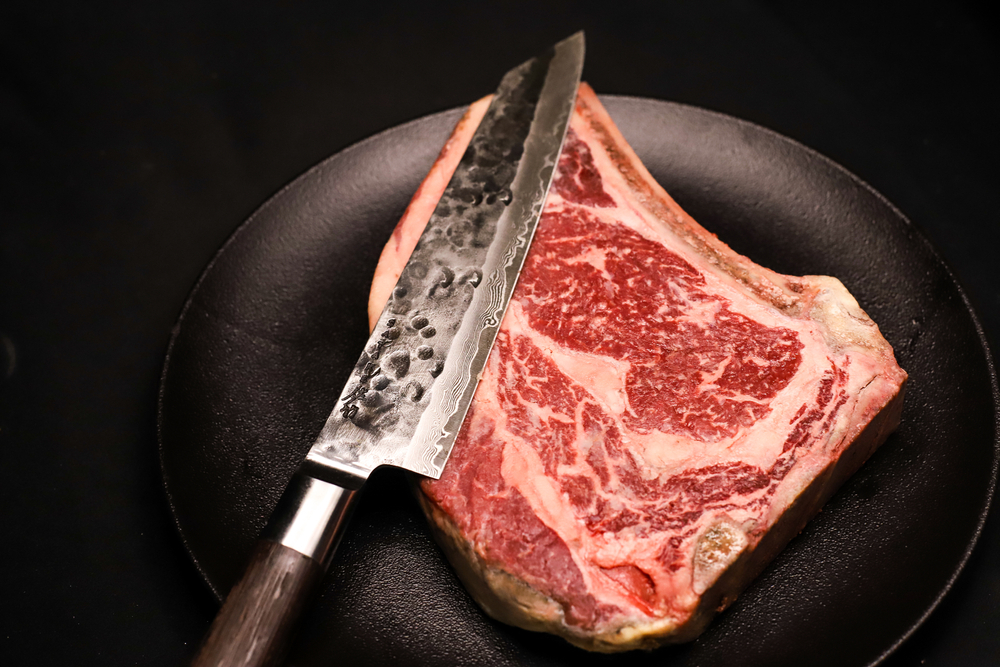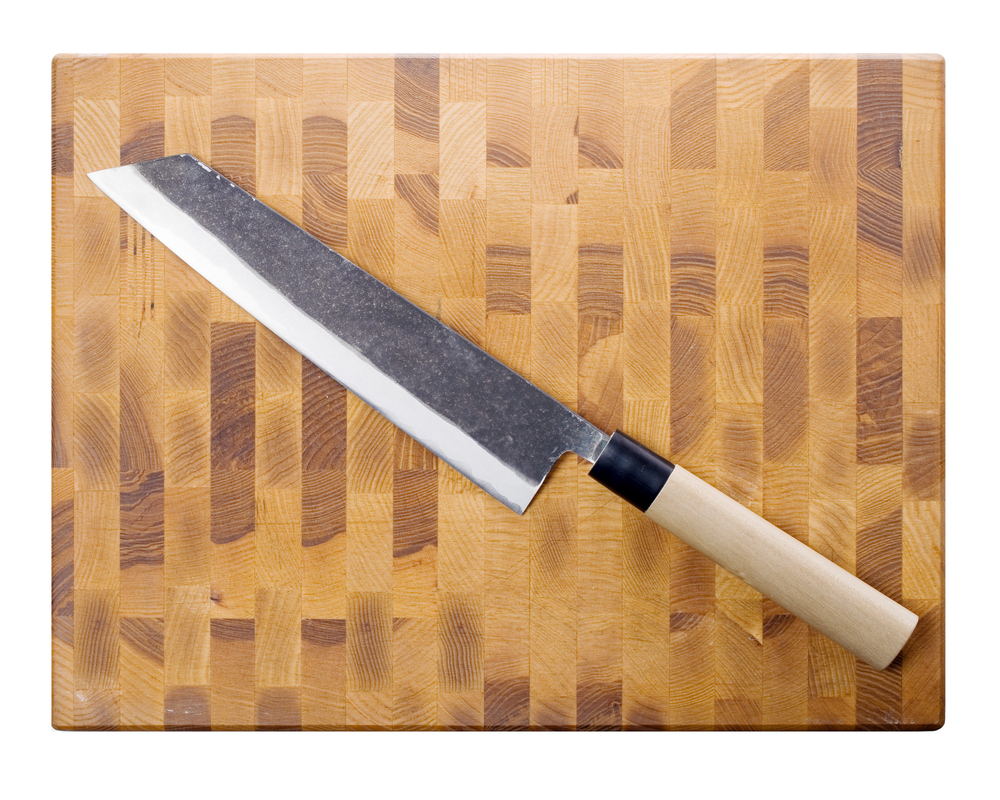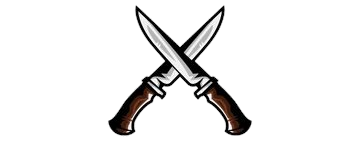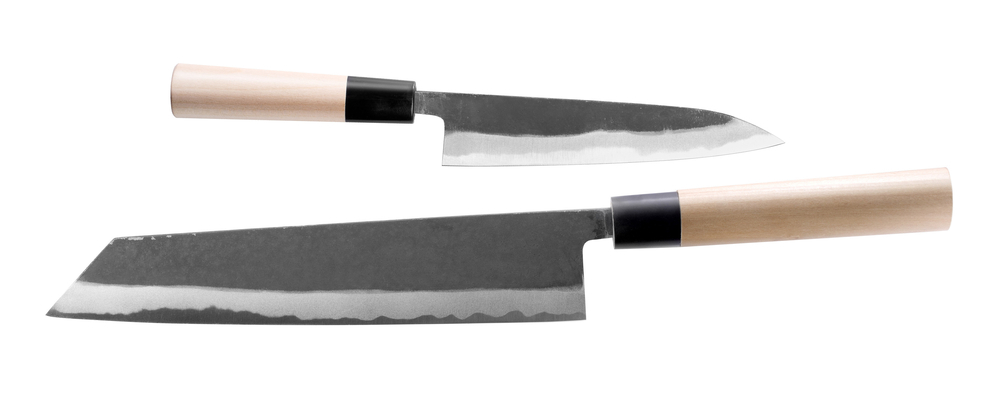There are many different types of knives available on the market. There are standard kitchen knives and more specialized knives such as a Kiritsuki knife or a Chef Knife.
These two knives have very specific purposes and while they may seem to do similar tasks, there are still some important differences between each type. Let’s break down
the Kiritsuke knife vs chef knife for what you might use these knives for and the benefits of using each one in different situations.
Quick Overview of Differences
| Feature | Kiritsuke Knife | Chef Knife |
| Blade Length | Longer (8-10 inches) | Shorter (6-8 inches) |
| Blade Curve | More Gradual Curve | More Pronounced Curve |
| Weight | Light Weight | Heavier |
| Balance | Better Balanced | Less Balance |
| Durability | Less Durable | More Durable |
| Maneuverability | Less Durable | Difficult to Maneuver |
| Maintenance | Difficult To Maintain/Sharpen | Easier Maintenance |
What is a Kiritsuke Knife?

Kiritsuke knives are a Japanese type of knife that can be used to cut and chop vegetables and make fish dishes. The blade is characteristically long about 8-10 inches and straight, with a curved tip generally higher curvature than a santoku knife. Some kiritsuke knives also have a Granton edge, a series of small grooves that help prevent food from sticking to the blade.
While kiritsuke knives are often used as all-purpose kitchen knives, they are particularly well-suited for tasks that require precise cuts, such as julienning carrots or slicing fish fillets. In addition, the elongated blade of a kiritsuke knife makes it ideal for use as a Sweeney Todd razor. As such, these versatile knives are an essential tool in any well-equipped kitchen.
History
The Kiritsuke knife is a Japanese blade with a long and storied history. Initially developed in the 17th century by the samurai Yasutsuga Nakamura, the Kiritsuke has undergone many changes over the years. Today, it remains a popular choice for chefs and home cooks alike, thanks to its versatile design.
The Kiritsuke is often used as an all-purpose knife, capable of performing many different tasks in the kitchen. Whether you’re slicing vegetables, filleting fish, or removing fish skin, this knife can handle it all. With its sharp blade and sleek profile, the Kiritsuke is a beautiful addition to any kitchen.
What is a Chef’s Knife?
A chef knife is a multi-purpose knife and can be used to slice, chop, or mince The gyuto/chef knife has a 6-8 inches long, curved blade that is ideal for slicing through meats and vegetables. The blade is also thin and sharp, making it easy to create precise cuts.
A Chef Knife is typically used as the primary all-purpose knife in a Japanese kitchen. In addition to being an essential tool for preparing daily meals, it is also commonly used for sushi preparation. It can be used to slice fish and seafood, as well as to roll and cut sushi rolls. A chef knife is an essential tool for any chef who wants to create authentic Japanese cuisine.
History
A chef knife is a kitchen staple for anyone who loves to cook. But where did this versatile tool come from? The modern chef knife was developed in France in the 19th century. At that time, French chefs were looking for a knife that could be used for both chopping and slicing, and the chef knife fits the bill perfectly.
Soon, the chef knife became a standard piece of equipment in professional kitchens across Europe. In the 20th century, the chef knife began to gain popularity among home cooks as well. Today, it’s a vital tool for any cook who loves to spend time in the kitchen. It doesn’t matter if your goal is to be a professional chef, or just to spend time in the kitchen, a high-quality chef knife can prove valuable.
Chef Knife vs Kiritsuke – Key Differences
The main difference between Kiritsuki knife and a chef knife is the blade length and shape blade curve. Every kitchen needs at least one good chef’s knife. But what if you’re a sushi chef, or you regularly prepare traditional Japanese cuisine? In that case, you might want to consider adding a Kiritsuki knife to your collection. Here’s a quick overview of the key differences between these two types of knives:
Blade Length and Shape
The Kiritsuki knife has a longer, thinner blade than the typical chef’s knife. It’s also slightly curved, which makes it ideal for slicing and chopping fish. The Chef knife is smaller and thicker, and it has a more rectangular form. This makes it ideal for chopping vegetables or other dense foods.
Blade Curve
The curve of a knife blade affects its slicing and chopping efficiency. A kiritsuke knife has a more gradual curve than a chef knife, making it better suited for slicing fish. Conversely, a chef’s knife has a more pronounced curve, making it better at chopping vegetables.
Weight and Balance
The Kiritsuki knife is generally lighter and better balanced than a chef’s knife, making it easier to control during delicate cutting tasks.
Durability and Resistance
The kiritsuke knife is not as durable as a chef knife. It is not meant to be used for intense chopping and slicing but is better suited for more delicate tasks. Chef knives, on the contrary, can withstand greater force and be used for many tasks in the kitchen.
Maneuverability
While Chef knives are larger and heavier, they are not as maneuverable as kiritsuke knives. This is because they have longer blades and are bulkier. This makes them more difficult to control and requires more strength to use. Kiritsuke knives are smaller and lighter, making them easier to handle. They are also more versatile, as they can be used for slicing, dicing, and chopping.
Cleaning and Maintenance
Kiritsuke knives are made from harder steel than chef knives. They also have a more complex blade geometry, which means they are more difficult to sharpen. Chef knives are made from softer steel, which makes them easier to sharpen, but also means they are more prone to chipping.
Because of the harder steel and more complex blade geometry, kiritsuke knives require more care and maintenance than chef knives.
So, which type of knife is right for you? If you’re primarily a sushi chef or you frequently prepare traditional Japanese cuisine, then the Kiritsuki knife is probably the better choice. However, if you don’t have specific needs like those, then a standard chef’s knife will probably suffice.
How to choose your knife?

It really depends on what you will be using your knife for. If you are looking for a Kiritsuke knife, then you should consider the key differences between the two types of knives. If you need a knife that is better suited for slicing and chopping fish, then go for a Kiritsuke knife. However, if you need a knife that is more versatile and can be used for a variety of tasks, then a chef knife might be the better option.
Pros and Cons of Kiritsuki knife
A Kiritsuki knife is a type of Japanese kitchen knife that is typically used for slicing and dicing fish. It has a single-edged blade that is slightly curved and has a pointed tip. The blade of a Kiritsuki knife is usually about 8-10 inches long.
One of the main advantages of using a Kiritsuki knife is that it is very sharp. This makes it ideal for cutting through tough fish skin. Additionally, the curved blade of the Kiritsuki knife helps to create even slices of fish flesh.
Another advantage of the Kiritsuki knife is that it is relatively lightweight. This makes it easy to handle and maneuver, even for those who are not used to handling larger kitchen knives.
However, there are also some disadvantages to using a Kiritsuki knife. One of the main drawbacks is that the blade can be fragile and may chip or break if it hits a hard surface. Additionally, the pointed tip of the blade can make it difficult to control when slicing through thick pieces of fish flesh.
Pros and Cons of Chef Knife
A chef knife is a type of kitchen knife that is typically used for chopping and slicing vegetables. It has a curved blade that is about 6-8 inches long.
Chef knives are popular because they are versatile and can be used for a variety of tasks in the kitchen, such as slicing, dicing, and chopping. They are also relatively affordable when compared to other types of kitchen knives.
However, there are also some disadvantages to using a chef’s knife. One of the main drawbacks is that chef knives can be bulky and difficult to maneuver. This makes them less suitable for more delicate tasks, such as slicing fish.
What are Western Knives?
As you may know, there are two main types of knives in the culinary world – Western knives and Japanese knives. Let’s see western knives also known as western chef knives in detail.
Western knives are typically made from one piece of stainless steel, which offers a good balance between durability and ease of care. The blade is usually about 8 inches long, although you can find shorter and longer versions. The handle is often made from wood or plastic, and the bolster (the part of the knife where the blade meets the handle) provides added stability and weight.
When it comes to cutting, Western knives are designed for a variety of chopping, slicing, and dicing techniques. The blade is usually fairly wide, which gives you more surface area to work with when chopping. And the slightly curved edge helps you rock the knife back and forth to create thinner slices.
One of the benefits of using a Western knife is that they’re widely available and relatively affordable. You can find them at most kitchen stores or online retailers. And because they’re so popular, there’s a lot of variety in terms of style and quality.
Conclusion – Kiritsuke Knife vs Chef Knife
After reading this chef knife vs kiritsuke comparison, you should have a better understanding of the key differences between these two types of knives. If you need a sharp knife for slicing and dicing fish, then go for a Kiritsuke knife. However, if you need a versatile and affordable knife for general kitchen tasks, then a chef knife would be a better option.
Kiritsuke knife vs Gyuto
Kiritsuke knife Pros: -Very sharp -Lightweight and easy to handle
Kiritsuke knife Cons: -The blade can be fragile and may chip or break -Difficult to control when slicing through thick pieces of fish flesh
Chef knife Pros: -Relatively affordable -Versatile and can be used for a variety of tasks
Chef knife Cons: -Can be bulky and difficult to maneuver -Less suitable for more delicate tasks
So, which knife is better for you? It really depends on your needs and preferences.
I hope you found this Kiritsuke knife vs chef knife comparison useful. If you have any questions or comments, please feel free to leave them below. Thanks for reading!
FAQs
What is a Kiritsuke knife used for?
Kiritsuke knives are typically used for slicing and dicing fish. However, they can also be used for other kitchen tasks such as chopping and slicing vegetables.
What is a chef’s knife used for?
Chef knives are versatile and can be used for a variety of tasks in the kitchen, such as slicing, dicing, and chopping.
Which knife is sharper – Kiritsuke or chef?
Kiritsuke knives are usually sharper than chef knives. However, this difference is not always significant, and it really depends on the quality of the knife.
Which knife is better for slicing fish – Kiritsuke or chef?
Kiritsuke knives are better for slicing fish because they are lighter and easier to control. Chef knives can be more difficult to maneuver and may not provide as clean of a slice.
How do you pronounce Kiritsuke?
Kiritsuke is pronounced as “keer-ee-tsoo-kay”.

